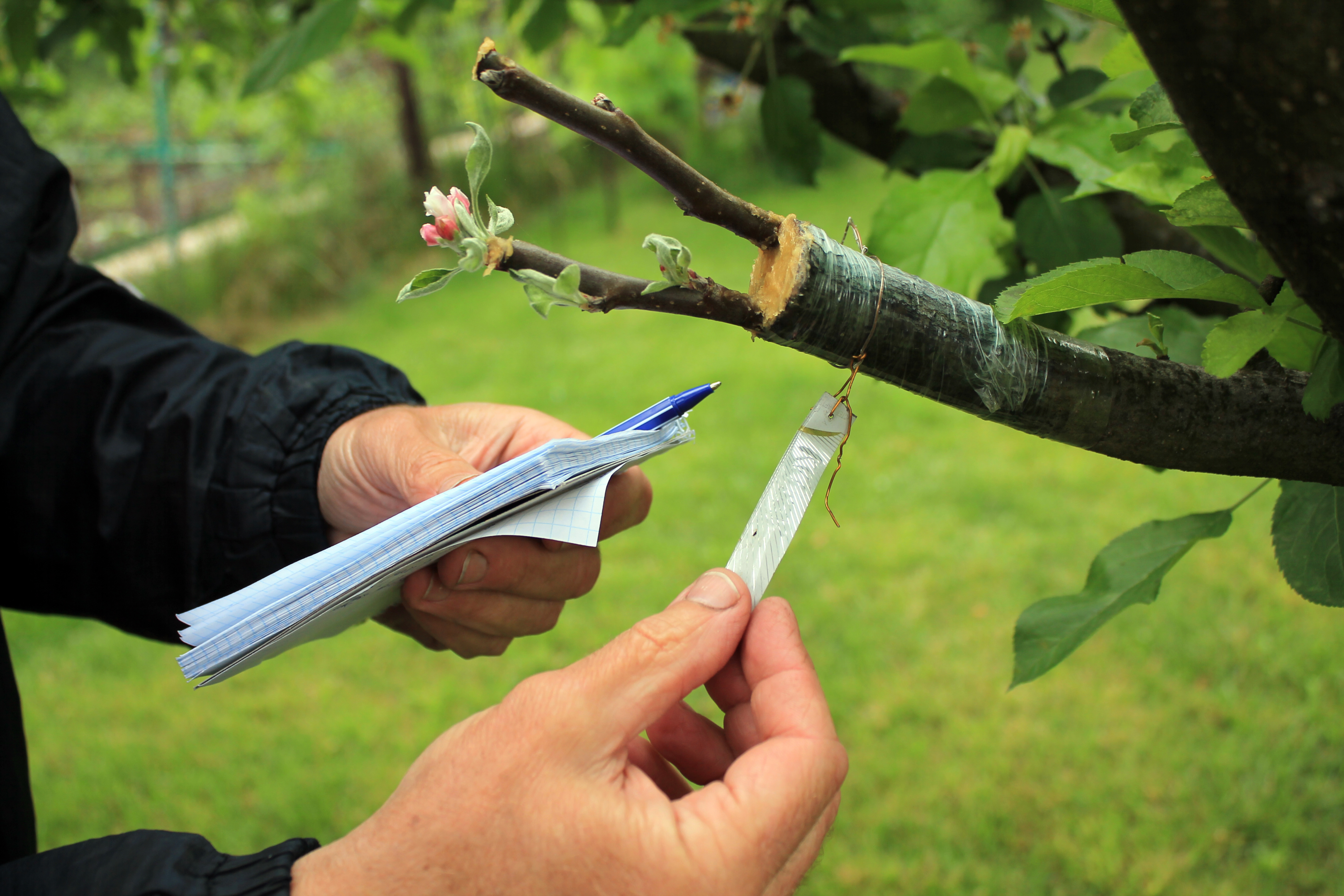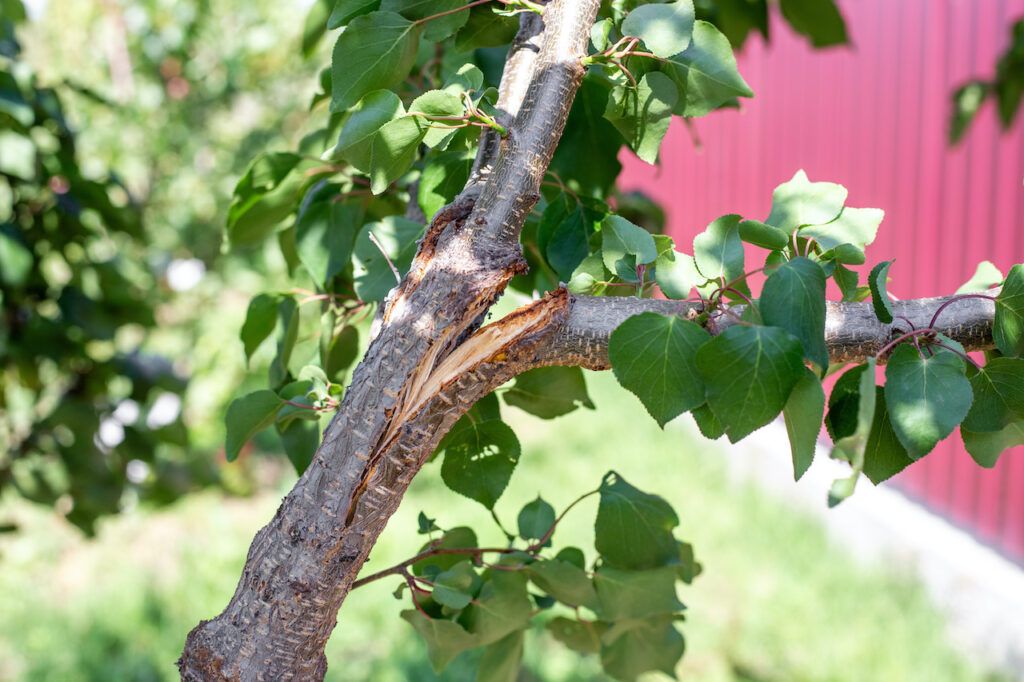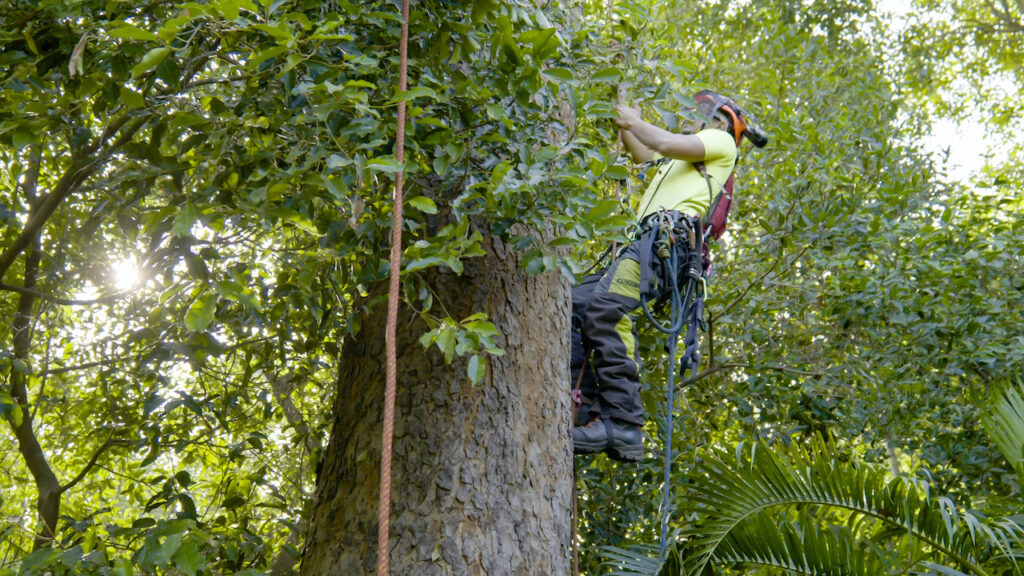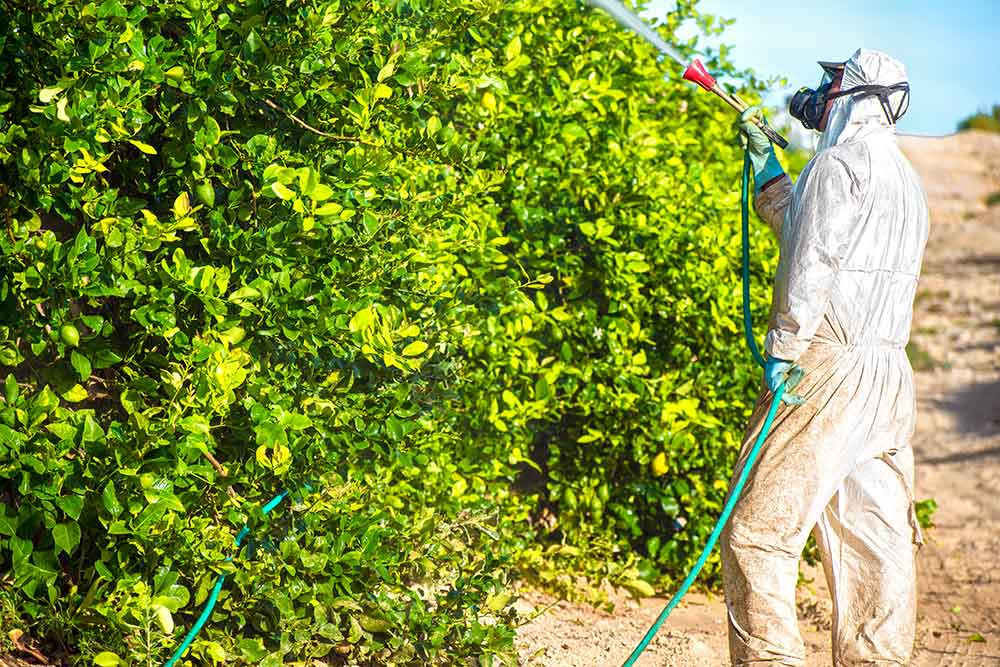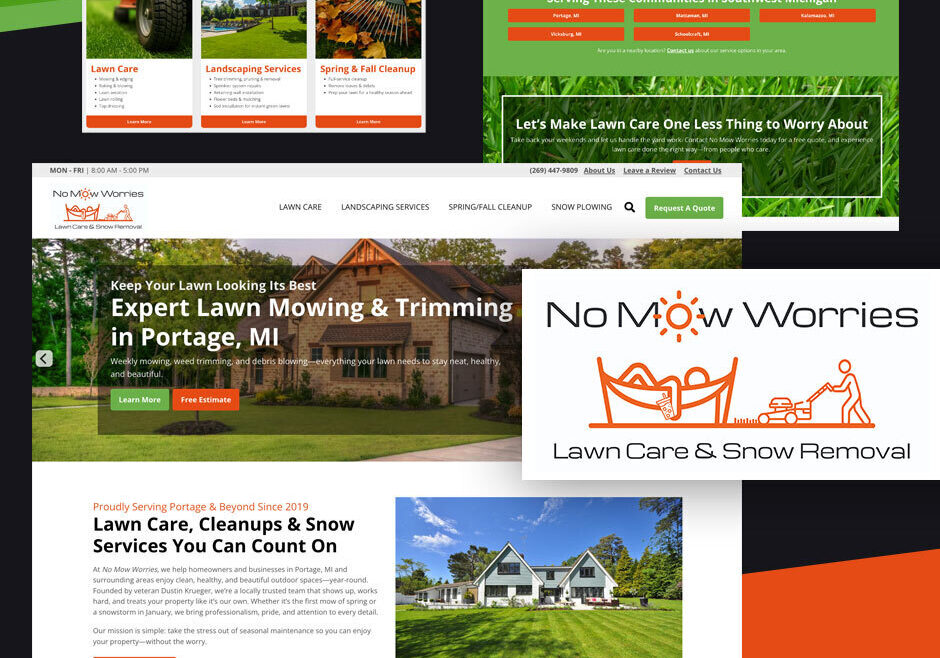Why Tree Care Businesses Should Start a Plant Health Care Program
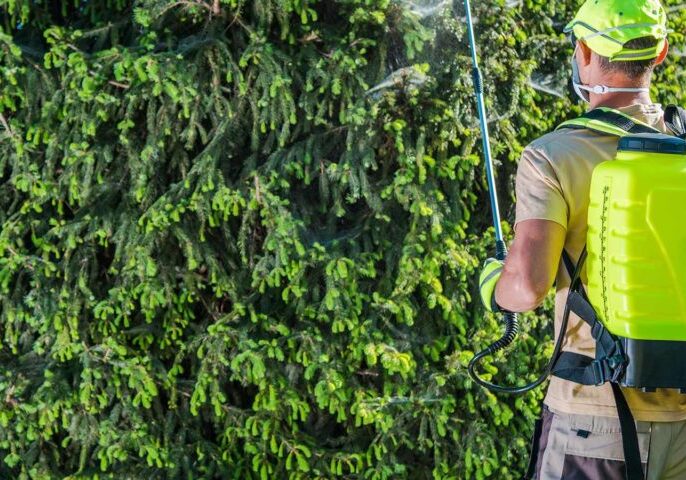
Why launch a Plant Health Care (PHC) program?
PHC program gives tree-care businesses a proactive, science-based way to keep trees and shrubs healthy year-round, reducing costly emergencies, generating predictable recurring revenue, and positioning your company as the trusted expert in long-term tree health.
Plant Health Care Programs FAQs
Plant health care services offer proactive, science-based solutions that keep trees, shrubs, and landscapes healthy year-round. Instead of waiting for problems to arise, these programs focus on prevention, early detection, and customized treatments that protect plant health while reducing costly emergency interventions. A successful plant healthcare program adds recurring revenue to your service mix and strengthens your position as a trusted expert in tree health and biological tree services.
Expanding your plant health care offerings creates new opportunities to serve homeowners, commercial property managers, and municipalities who increasingly value long-term plant health and proactive landscape care.
What is Plant Health Care (PHC) or Plant Health Management?
Plant Health Care (PHC) is an integrated approach to maintaining disease-free shrubs, trees, and plants. It focuses on biological tree services and proactive maintenance designed to ensure the long-term well-being and vitality of trees, rather than simply reacting to problems after they arise. PHC involves regular inspections, early diagnosis of potential issues, and the implementation of targeted treatments and practices to maintain the health and vigor of plants. Plants need the proper nutrients to help them fight off insects, diseases, and environmental stress factors.
Tree biology work is an essential part of PHC services, as healthy trees are naturally more resistant to damage, decline, or decay. In many cases, tree health management allows arborists to correct underlying issues before symptoms become visible. When trees are maintained through plant health care services, they not only survive but thrive—adding beauty and value to client properties. Your clients take pride in the trees on their property because of the many benefits trees provide for both the environment and the surrounding landscape. Trees produce oxygen, provide vital habitats for birds, animals, and beneficial insects, help prevent soil erosion, contribute to sustainable landscaping, and offer shade that reduces energy consumption.
Comprehensive tree health management may include pruning to encourage healthy growth, soil nutrient management through fertilization, deep root soil injections, the application of horticultural oils, ongoing hydration, insect and pest control using integrated pest management (IPM) strategies, the prevention of disease outbreaks, and even selective removal of dying or competing trees.
A few things to remember: plant health care should always be tailored to the specific needs of your business and the unique trees, shrubs, and plants on any client property. No two plant health care programs are exactly alike. However, there are several core principles that all successful PHC programs should follow:
- A holistic approach: This approach evaluates all factors that affect plant and tree health, including soil quality, weather patterns, environmental conditions, pests, and regional plant diseases.
- A comprehensive approach: A proper plant health care program addresses not only the most common problems but also the full spectrum of tree, shrub, and landscape issues specific to the property’s location. For example, pest and disease pressures in the Northeast may differ significantly from those in the South, Midwest, or Western U.S.
- An ongoing commitment: Plant health care services are not one-time fixes. They require long-term monitoring, routine inspections, and recurring treatments as part of a structured tree and shrub care program. This allows your tree care company to build lasting client relationships while generating predictable, recurring revenue.
Expanding into plant healthcare services allows tree care companies to provide a higher level of expertise while protecting customer investments in their landscapes. A well-managed plant health care program establishes your business as a trusted resource for long-term tree health management.
Components of Plant Health Care Programs
A successful plant health care program includes a combination of proactive strategies, routine maintenance, and targeted treatments. These key components help ensure the ongoing health and longevity of trees, shrubs, and landscape plants while allowing tree care companies to build long-term client relationships through recurring plant health care services.
Regular tree inspections – Routine inspections serve as the foundation of any PHC program. Similar to how individuals benefit from regular doctor and dentist appointments, trees and plants require consistent monitoring to identify early warning signs of stress or disease. Regular inspections allow arborists to detect issues such as insect infestations, nutrient deficiencies, soil compaction, fungal infections, and environmental stress before they escalate into costly problems.
Diagnostics and ongoing monitoring of tree health – If abnormalities are discovered during inspections, arborists must diagnose the root cause. This may involve soil tests, tissue sampling, pest identification, or consultation with plant pathology experts. Continuous monitoring of plant health allows for adjustments in treatment protocols as environmental conditions, pest populations, or soil health change over time.
Proactive and preventive treatments – After identifying the problem, a customized treatment plan is developed based on the specific needs of the property. These proactive measures may include corrective pruning to improve air circulation, carefully timed applications of horticultural oils, deep root fertilization to correct nutrient deficiencies, soil amendments, mulching, or treatments to address pest or disease pressures. Preventive care helps protect the long-term health of trees while reducing the need for costly reactive treatments.
Integrated Pest Management (IPM) – IPM is a cornerstone of modern biological tree services. Rather than relying solely on chemical treatments, integrated pest management uses a combination of biological controls, cultural practices, and limited chemical applications to control insect pests and disease. Healthy trees that receive proper nutrition and care are naturally more resistant to pest outbreaks. Offering IPM services as part of your plant health care program helps clients avoid emergency pest infestations while maintaining a balanced ecosystem on their property.
Tree and shrub care programs customized to local conditions – Every property faces its own set of environmental challenges based on region, climate, soil type, and plant species. Successful plant health care services include site-specific solutions that account for these variables, ensuring optimal tree and shrub care throughout each season.
Record keeping and documentation – Effective plant health care programs track the health history of every tree and shrub on the property. Using software tools like Arborgold’s plant health care and tree inventory software, tree care companies can maintain detailed treatment records, site maps, inspection reports, and monitoring schedules to provide better long-term care and demonstrate value to clients.
By building a comprehensive plant health care program with these components, tree care businesses can help property owners protect their valuable green assets while generating recurring revenue streams that strengthen the business over time.
Why Tree Care Businesses Should Start a Plant Health Care Program (PHC)
Launching a dedicated plant health care program offers multiple advantages for tree care businesses that want to build long-term client relationships while increasing revenue. By offering plant health care services as part of your core service mix, your company positions itself as a proactive partner in protecting your clients’ investments in trees, shrubs, and landscaped properties. The business benefits of plant health care services include:
Increased customer satisfaction and loyalty – Clients feel more confident when they know their trees and plants are being cared for on a regular basis by professionals using proven plant health care methods. Offering plant health care services helps extend the lifespan of their valuable trees while minimizing risks of sudden decline. As a result, customers are more likely to renew service contracts, refer your company to others, and trust you as their go-to expert for tree health services and biological tree services.
Reduced liability risk for property owners and your business – Proactive monitoring and early intervention help identify structural weaknesses, pest infestations, or disease outbreaks before they pose serious safety hazards. Plant health care programs allow you to reduce the chance of costly emergency tree removals, property damage, or legal exposure from falling limbs or hazardous trees.
Improved employee morale and professional development – A successful plant health care program requires trained, knowledgeable staff who take pride in their expertise. Employees feel more engaged when they’re empowered to deliver customized care plans that demonstrate real value to clients, while also expanding their skills in diagnostics, integrated pest management (IPM), and sustainable landscaping practices.
Increased profits through recurring revenue – Traditional tree work often relies on seasonal demand or one-time removals. Plant health care services create steady, recurring income as clients commit to year-round monitoring, treatment plans, and follow-up visits. This consistent revenue stream helps your business weather seasonal fluctuations and economic shifts while supporting predictable growth. For additional ways to generate income from plant health care, explore more ways to increase revenue with plant health care treatments.
Positive environmental impact – Healthy plants and trees are better equipped to resist pests, pathogens, and environmental stress. Plant health care programs contribute to the broader goals of sustainable landscaping by reducing unnecessary pesticide applications, improving soil health, and supporting local ecosystems.
Competitive advantage in the tree care industry – Many tree care businesses still focus primarily on removals or reactive services. Adding plant health care services to your portfolio allows your company to stand out from competitors by offering full-service tree and shrub care programs that emphasize long-term plant vitality. Clients are increasingly seeking companies that provide not only technical expertise but also sustainable solutions that protect both their properties and the environment.
Expanding your service offerings to include plant health care positions your company for long-term success while strengthening client trust and profitability.
Implementing Plant Health Care with Tree Work
Launching a plant health care program requires more than simply offering new services — it involves careful planning, staff training, system development, and ongoing client education. By taking a thoughtful approach, your tree care business can successfully build a profitable plant health care services division that supports long-term growth.
Assess current tree care practices — Begin by reviewing your existing service offerings to identify where plant health care services can enhance your current business model. The field of plant health care is constantly evolving with new research, treatment options, and best practices. Clients are increasingly looking to partner with companies that provide expert guidance on protecting their trees, shrubs, and overall landscape health through biological tree services and science-based care.
Start with clients you have — Your existing client base is an excellent starting point for introducing plant health care services. Many homeowners and commercial property managers are already concerned with protecting the long-term value of their properties. Proactively notify current clients about your new plant health care program through email campaigns, phone calls, or in-person consultations. Demonstrate how your plant health care program can complement the tree services they are already receiving while offering additional protection against pests, diseases, and environmental stress.
Train, educate, and certify your staff — Successful plant health care programs require skilled arborists trained in diagnostics, treatment protocols, and integrated pest management (IPM). Numerous industry certifications are available through organizations such as the International Society of Arboriculture (ISA) and the Tree Care Industry Association (TCIA). Certification not only builds your team’s expertise but also gives clients confidence in your company’s commitment to professional plant health care standards.
Develop a comprehensive tree health monitoring system — An organized system for tracking tree and shrub health over time is essential for successful PHC programs. Arborgold’s Tree Inventory Management Software allows companies to record detailed treatment histories, inspection results, GPS locations, DBH measurements, canopy size, custom tags, and photo documentation for every tree on a client’s property. This data-driven approach improves diagnostics, streamlines recurring plant health care services, and provides transparency to clients. To learn more about the full benefits of using software to manage plant health care, read 5 benefits of Arborgold’s plant care software.
Network with other professionals — Building relationships within the arboriculture community can help your company learn best practices, exchange knowledge, and generate referral opportunities. Collaboration with other tree care businesses, horticultural consultants, university extension programs, and plant pathology specialists will strengthen your plant health care offerings and help your business stay ahead of emerging challenges.
By investing in staff training, diagnostic systems, and client education, tree care businesses can confidently expand into plant health care services while providing additional value to customers and generating consistent recurring revenue.
Promoting Plant and Tree Health Services
Once your plant health care program is in place, promoting these services effectively is essential for attracting new customers and educating your existing client base. Many property owners are actively searching for plant health care services but may not be aware that your tree care company offers them. Clear, targeted marketing helps position your company as a leader in tree health management, biological tree services, and sustainable landscaping.
Website — Create a dedicated page on your company’s website that clearly outlines your plant health care program. Use this page to explain the benefits of plant health care services, the components of your program, and how your approach helps clients protect their valuable trees and shrubs. Be sure to optimize the page with relevant search terms such as plant health care services, plant health care program, and tree health management to improve your visibility in search engine rankings.
Social media — Use your social media channels to educate followers about common tree health threats in your region, such as invasive pests, fungal diseases, or soil deficiencies. Post before-and-after photos of successful plant health care treatments and highlight seasonal maintenance tips to help property owners stay proactive. Educational posts position your company as a trusted resource for plant health care services while keeping your brand top of mind.
Case studies & success stories — Client testimonials and real-world examples are powerful marketing tools for showcasing the value of your plant health care program. If customers are willing, document their success stories — such as how your program helped save a mature tree from pest damage or how long-term monitoring preserved the health of an entire property’s tree canopy. Feature these stories on your website, in your blog, and across your social media platforms to build credibility and trust with prospective clients.
Community education — Consider hosting free workshops, webinars, or seminars for homeowners associations (HOAs), property managers, or municipal groups interested in proactive tree care. Providing educational content on plant health care and integrated pest management (IPM) not only positions your company as an industry expert but may also generate referral opportunities and long-term partnerships.
By actively promoting your plant health care services through multiple marketing channels, your company can increase awareness, attract new clients, and solidify your reputation as a leader in biological tree services and proactive plant health management.
Growing with Plant Health Care Services
By taking a holistic and comprehensive approach to tree health care and incorporating it into your tree company’s annual business plan, you can generate consistent income, retain more clients, and elevate your reputation as a trusted authority in plant health. A plant health care program is more than just an added service—it’s a strategic investment in your company’s future and a value-driven offering that keeps your customers’ landscapes thriving.
From boosting recurring revenue to delivering measurable environmental benefits, plant health care services position your tree care business to compete and grow in any economy. Whether you’re just beginning to explore biological tree services or you’re ready to formalize a full-service plant health care program, the opportunity to expand is clear—and your clients are already looking for providers who can deliver these solutions.
Here at Arborgold, we call that a tree-mendous win-win.
Learn how Arborgold’s tree service software can help you streamline your plant health care services. With built-in features for service tracking, tree inventory management, customer communication, and recurring billing, Arborgold gives your business the tools it needs to deliver effective, profitable PHC programs at scale. Take a product tour or speak to an Arborgold representative today to see how Arborgold supports successful tree and shrub care programs.
Here are some additional resources that you may find helpful to get your plant healthcare program underway:
The International Society of Arboriculture: https://www.isa-arbor.com
The American Society of Consulting Arborists: https://www.asca-consultants.org
The National Arborist Association: https://www.treesaregood.org
The Tree Care Industry Association: https://www.tcia.org
Frequently Asked Questions
How does plant health care help protect trees from emerald ash borer?
Plant health care programs include proactive monitoring and treatment options that can help detect and control pests like emerald ash borer before serious damage occurs. Early intervention is essential to protect vulnerable ash trees and prevent costly removals.
Is insect and disease control included in plant health care services?
Yes. Insect and disease control is a core component of most plant health care programs. By using integrated pest management (IPM) techniques, arborists can manage insect infestations, fungal diseases, and other health threats while minimizing unnecessary pesticide use.
Can plant health care services be bundled with lawn care programs?
Absolutely. Many tree care companies offer bundled services that include both plant health care and lawn care. This creates a comprehensive property maintenance plan that protects the entire landscape and provides additional convenience for clients.
Share this resource
